Best OBD-II Scanners for 2024, Tested
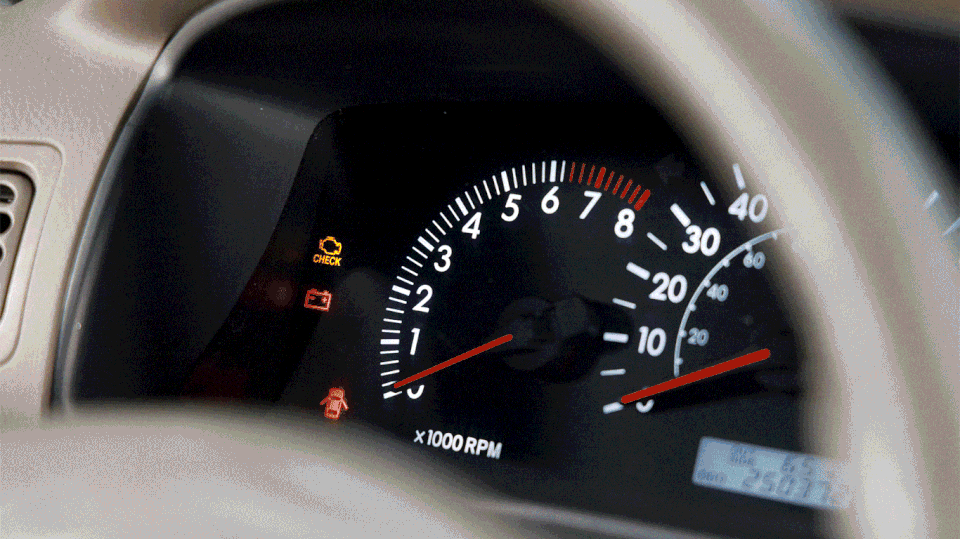
"Hearst Magazines and Yahoo may earn commission or revenue on some items through these links."
The check-engine light suddenly appearing on your dashboard is enough to dampen any drive. For the unprepared, the first reaction may be imagining the worst-case scenario. Luckily, it doesn't have to be that way.
Instead, turn to an OBD-II scanner. OBD stands for On-board Diagnostics, and an OBD-II scanner diagnoses your car's vital systems, providing valuable information about warning lights, airbags, ABS, and more, letting you know which systems might be at risk and the level of urgency. However, choosing the right OBD-II scanner can be challenging since these devices run the gamut from basic units to wildly advanced models. To assist you in making the right purchasing decision, the Gear Team ran several OBD-II scanners through our gauntlet to see how they compare. We excluded expensive models designed for professional technicians, focusing instead on those meant for garage enthusiasts like us.
Things to Consider When Shopping for an OBD-II Scanner
In 1996, the Environmental Protection Agency made the OBD-II port mandatory in all U.S. cars. This port is like a direct connection to your car's critical ECU components, similar to monitoring the health of a body's vital systems. Depending on the scanner, you can access as much or as little data as you need to begin the diagnostic process.
OBD-II scanners vary greatly in price, ranging from tens of dollars to thousands. Used correctly, they can save you a bundle in auto diagnostics and repair costs. During our testing, we developed two unofficial categories: display and diagnostic OBD-II scanners.
Display OBD-II Scanners
Display OBD-II scanners display error codes that your vehicle's computer generates. This code provides limited information but is a solid starting point. After pulling the code, additional research will determine its meaning and let you determine your next steps. Display scanners are affordable, with fewer bells and whistles, but they lack the additional functions that diagnostic scanners provide.
Diagnostic OBD-II Scanners
For those who are a bit more serious about their auto repair, diagnostic OBD-II scanners provide more information on the car's inner workings, such as engine coolant temperature and air-fuel ratio. Other features in diagnostic scanners include technical service bulletins (TSBs), technical advice, module testing, and graphing. Consider using a diagnostic scanner if you find yourself disassembling cars and confidently putting them back together.
Other Considerations
OBD-II ports are typically found beneath the dashboard on the driver's side. To access the information, connect the diagnostic scanner to the OBD-II port (it only plugs in one way) and turn the vehicle to the "on" position without turning on the engine. You can start an engine while scanning, but it does carry a risk of further damage, depending on what's wrong with the vehicle.
The OBD-II system represents vehicle error codes as five-digit Diagnostic Trouble Codes (DTC). These codes are accompanied by brief descriptions that may not always be immediately clear about the exact issue, similar to someone reporting a stomachache when they have food poisoning. The DTC provides a general direction for troubleshooting, but the user is responsible for identifying the specific issue. Simply put, deciphering the DTC is the beginning of the diagnostic process, not the end.
We conducted tests on both corded and Bluetooth OBD-II scanners. We found that Bluetooth scanners and their associated smartphone apps typically offer a more user-friendly interface and experience. Additionally, the apps can be updated as new information comes to light, so we appreciated this new face of scanners and their potential for long-term use. On the other hand, corded scanners are known for speed and simplicity.
Our Test Vehicle
We wanted to use a common vehicle for this test to evaluate compatibility best, so we pulled in a 2005 Toyota Corolla owned by Gear Team tester Collin Morgan and set to work. The old beater had just rolled over 250,000 miles, so we were excited (and slightly nervous) to see what the scan tools would uncover.
How We Evaluated OBD-II Scanners
Knowing that there are different OBD-II scanners for different situations, we avoided pitting them against one another. Instead, we decided which scanner was best for each situation and rated them on that metric. We took detailed notes on the capabilities of each and started our testing.
To manufacture a check-engine light, we unplugged the mass-airflow sensor on the Corolla, started the car, and verified that the light was on. Then we plugged in each scanner and evaluated the following parameters:
Time from plug-in to code display
Number of live data Parameter IDs (PIDs)
Number of freeze-frame PIDs
Number of Inspection and Maintenance (I/M) Monitors displayed
The quality of the user interface (UI) through an app or the scanner itself
Accessible tests, smog-check capabilities, and additional diagnostic resources
Cord length (if applicable)
Other general notes
Comparing our notes from this test helped us choose which OBD-II scanner is best for various applications and which scanners don't quite meet expectations. Here are our top picks for the best OBD-II scanners.
Ancel BD310
The Ancel BD310 is our choice as the Best Display OBD-II Scanner for DIY Use. We loved the scanner's happy medium between corded and Bluetooth capabilities and felt the app's interface was excellent. You can use it with just the corded interface or connect it via Bluetooth and use the free app to access more data, diagnostic resources, and performance testing.
The BD310 was quick to connect and display codes, and it provided many of the perks of expensive scanners while staying affordable.
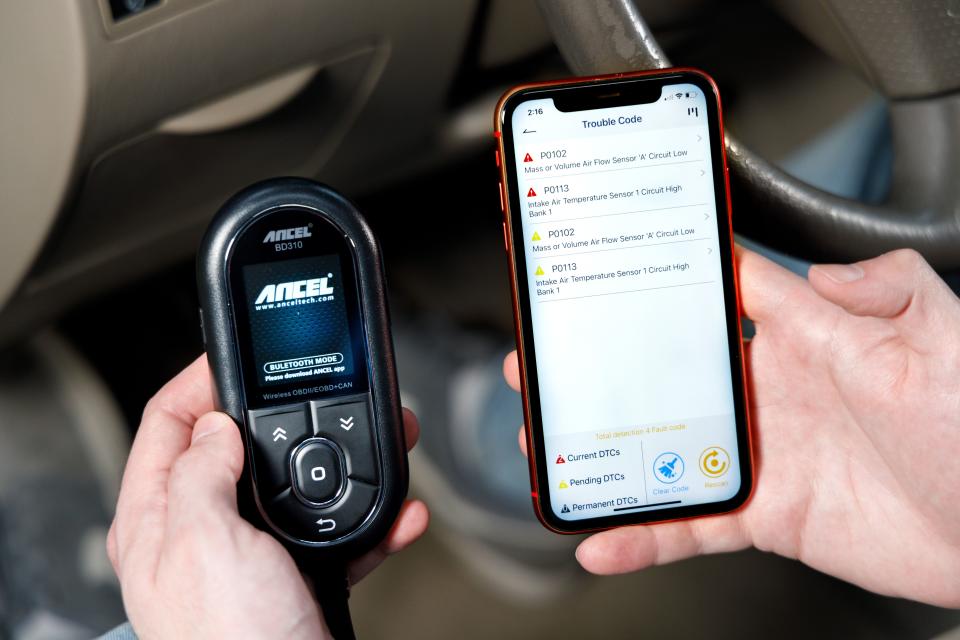
Ancel BD310
amazon.com
$77.99
Gannon BurgettBlueDriver Bluetooth Pro
There are definitely perks to Bluetooth, and the BlueDriver Bluetooth Pro is our pick for the best. Featuring an intuitive, easy-to-use app and some helpful diagnostic direction, this tiny little scanner receives our applause.
It took a bit longer to set up the BlueDriver initially, but once we were in, it was a gold mine. The tile-style interface was exceptionally easy to use, and we had no issues finding codes, tests, and other data. Features accessible through the app include model-specific features, TSBs, a battery reset procedure, and more, along with the expected DTCs. Another benefit to a Bluetooth scanner is the consistent updates, meaning the info is always current.
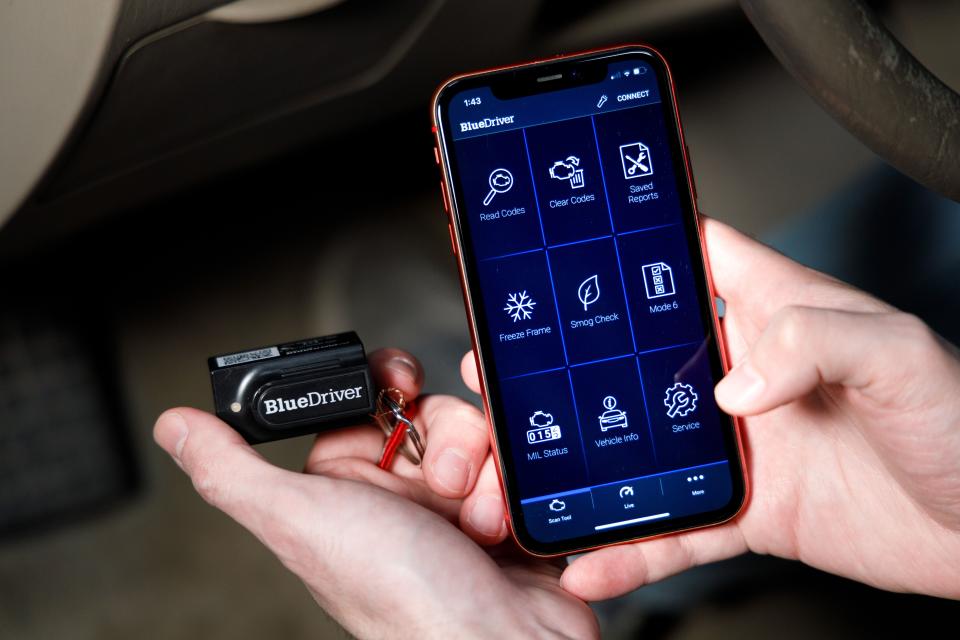
BlueDriver Bluetooth Pro
amazon.com
$99.95
Gannon BurgettInnova 5610
For an OBD-II scanner with a wider range of diagnostic capabilities, we were impressed by the testing functions, bidirectional control and additional diagnostic suggestions of the Innova 5610. It's a hefty scanner with a price to match. But with that price comes a plethora of functions inaccessible by cheaper OBD-II scanners. We were able to access five system and actuator tests, a hybrid/EV battery test function, an ABS bleeding procedure, and much more.
So while the price is steep, it's worth the investment if you work on cars more than the average person.
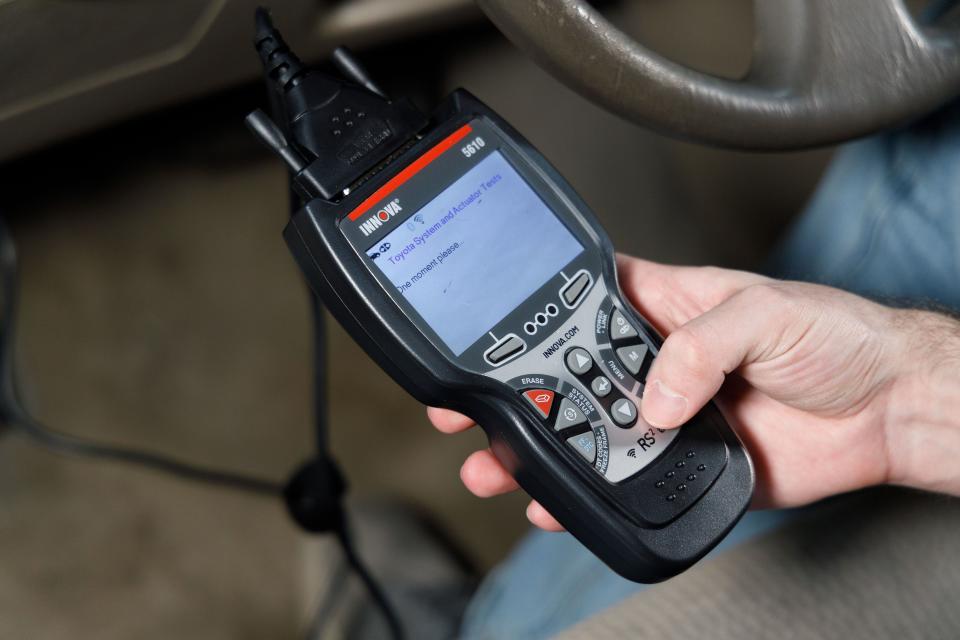
Innova 5610
amazon.com
$345.09
Gannon BurgettMotopower MP69033
For those just looking for a no-frills code reader, the Motopower MP69033 is a great choice. It simply reads and displays codes quickly, with a neat graphing function for certain live data PIDs—all while not breaking the bank. We liked the separate up and down buttons, a nice perk compared to the interfaces of other budget OBD-II scanners. The screen is old-school and pixelated, but it didn't bother us.
The MP69033 read our codes quicker than all of our hardwired scanners, displaying them in just over 17 seconds. A neat graphing function is also available for Car Speed, Coolant Temp, Load Value, and Engine RPM. It's not incredibly useful, but more of a neat little added touch.
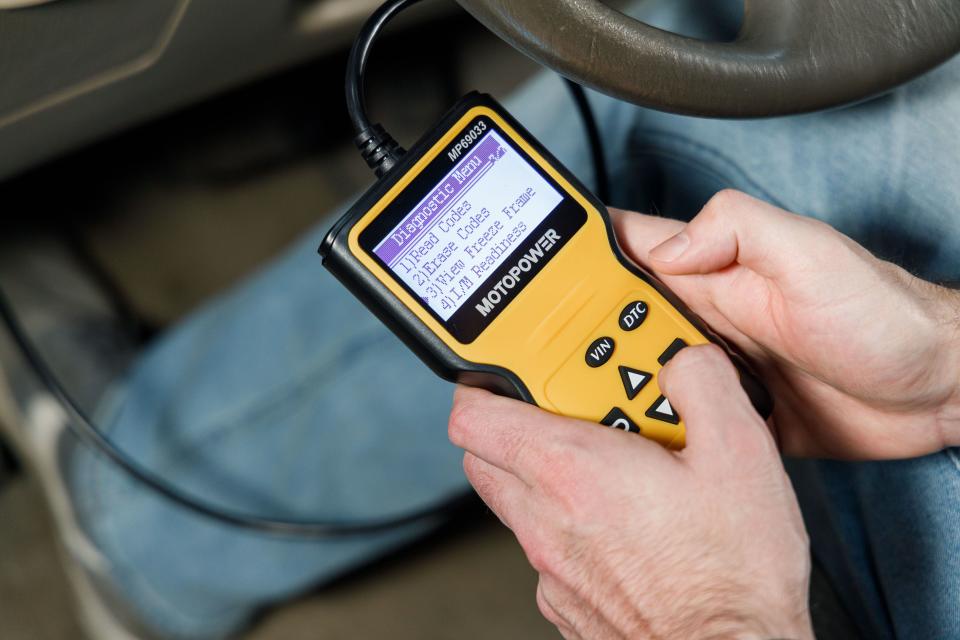
Motopower MP69033
amazon.com
$25.00
Gannon BurgettInnova 1000
We gave the Innova 1000 an Honorable Mention for its inclusion of diagnostic resources such as recalls, TSBs, and predicted repairs.
A Bluetooth device, it fell just short of the BlueDriver in a few key areas. The Innova provided less information and data, is more expensive, and the app is less intuitive. All that said, it worked just fine and it's a solid OBD-II scanner for most consumers.
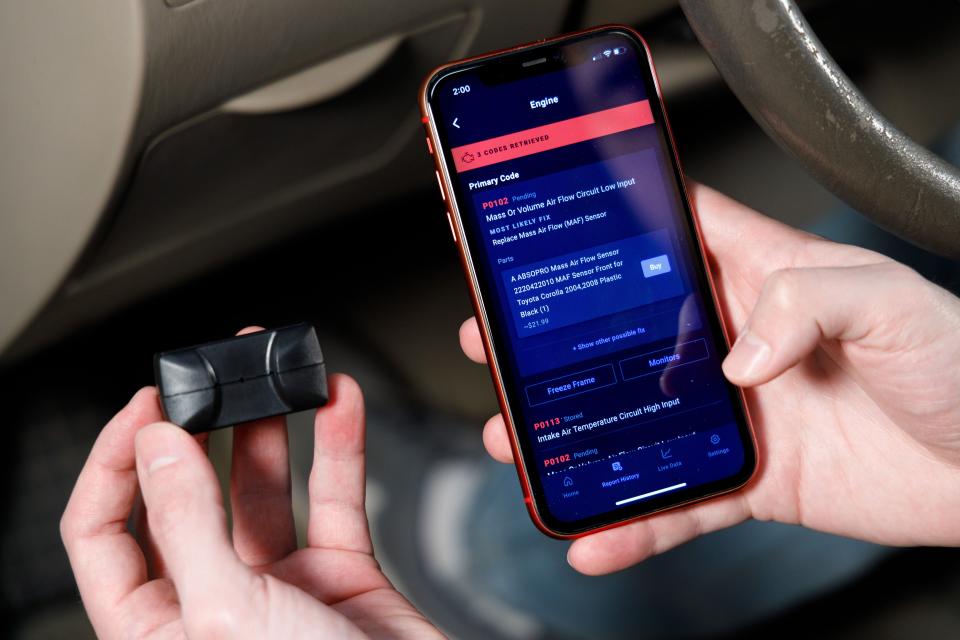
Innova 1000
amazon.com
$94.99
Gannon BurgettFoxwell NT301
The Foxwell NT301 struck us as a middle-of-the-road entry in our OBD-II scanner test. The screen is crisp and easily navigable, but it seemed a bit high-cost to justify a Best Of award. Along with the screen and UI, some tests were available to run, including an EVAP leak test and O2 monitor tests. There's also a print function via Micro-USB that could come in handy. But the price point didn't seem right for the limited functionality.
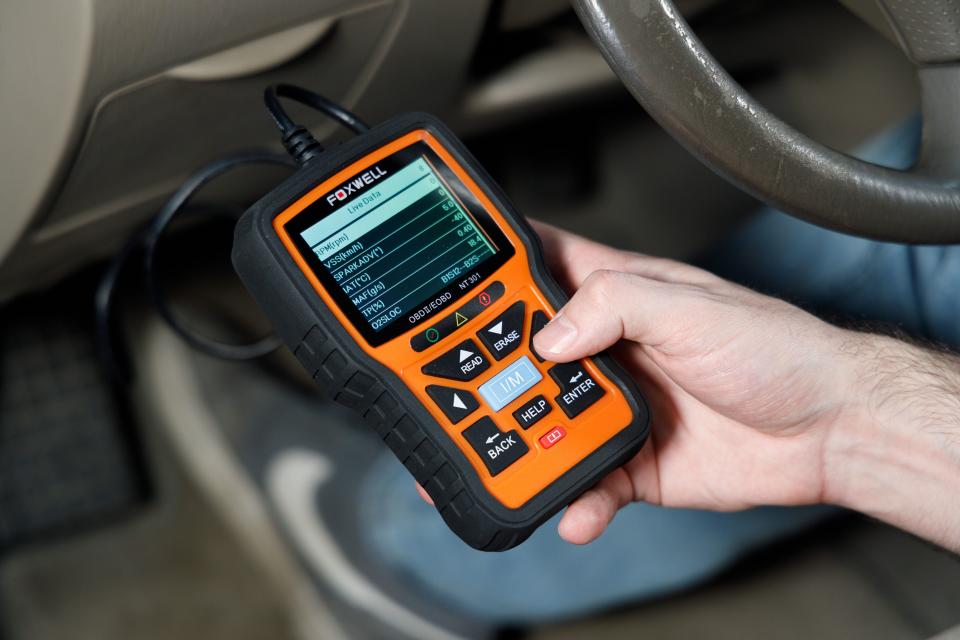
Foxwell NT301
amazon.com
$69.99
Gannon BurgettFixd Bluetooth Scanner
The Fixd Bluetooth Scanner lays excellent groundwork; it's just behind a paywall. While we could read and clear codes with just the base scanner, everything else requires a subscription to access. While there are some cool features once you pay (I/M readiness monitors, tips from mechanics, repair cost calculator), other OBD-II scanners provide access to similar functions without a monthly subscription.
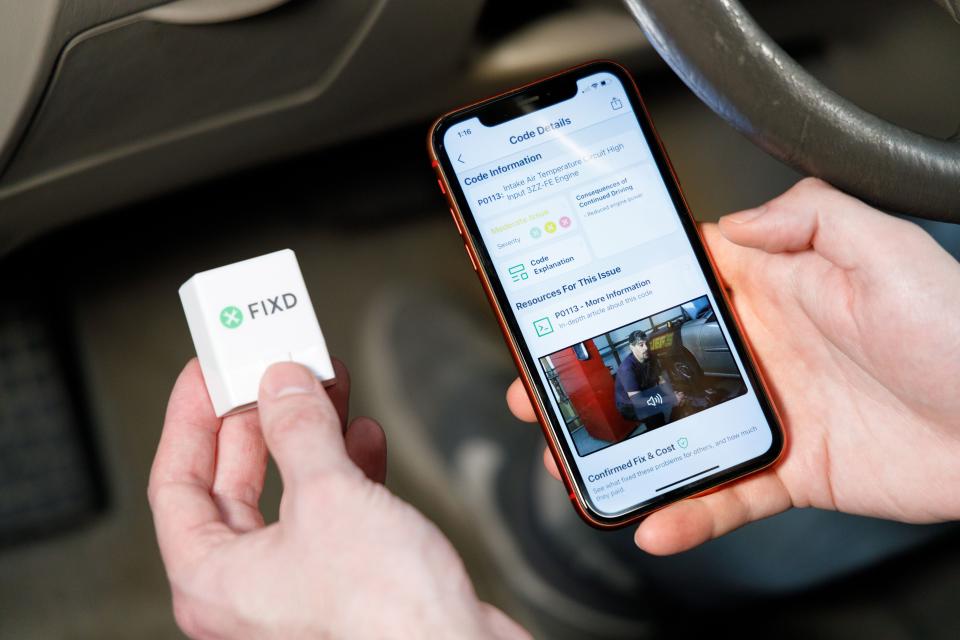
Fixd Bluetooth Scanner
amazon.com
$39.99
Gannon BurgettAutel AL319
The Autel AL319 OBD-II scanner was slow to boot up, slow to read codes, and difficult to navigate. Thanks to a single directional button, churning through the menus takes some practice (and patience). We recommend you look elsewhere for a simple code-reading scanner.
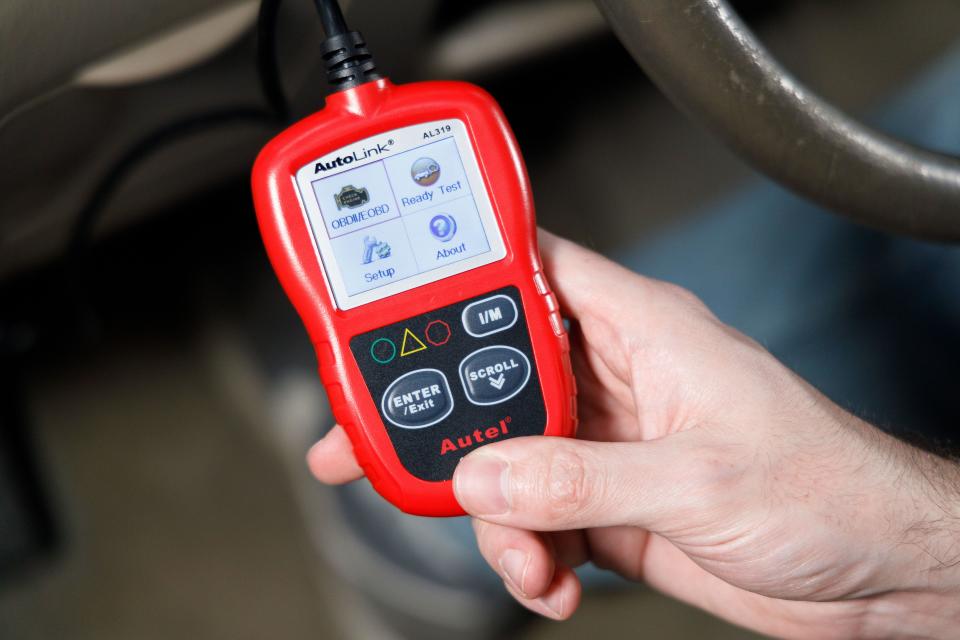
Autel AL319
amazon.com
$36.99
Gannon BurgettAkface Bluetooth
Don't let the cheap price tempt you—it reflects the quality of the Akface Bluetooth OBD-II scanner. The Akface doesn't use its own app, but rather piggybacks onto a selection of third-party apps. This makes connectivity a bear, and once you're in, you get simple code-reading capabilities and nothing else. Yes, it's cheap, but the Akface is not worth the hassle.
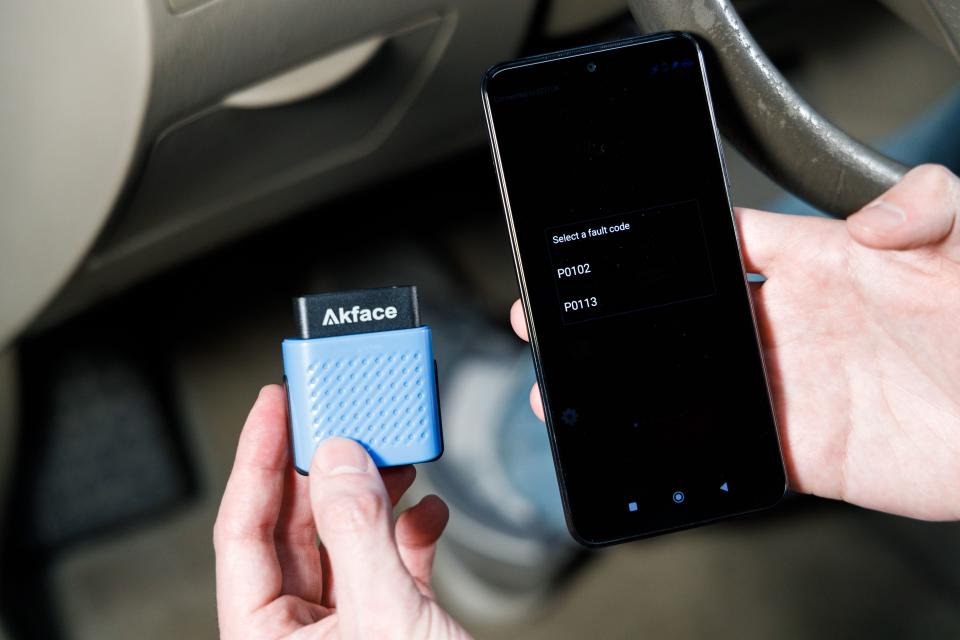
Akface Bluetooth
amazon.com
$6.99
GANNON BURGETTHow We Tested OBD-II Scanners
To test OBD-II scanners, we pulled a 2005 Toyota Corolla into the Car and Driver garage. We then set to work manufacturing a check-engine light (CEL) by unplugging the mass-air-flow sensor. Once the CEL was verified, we plugged in each OBD-II scanner and ran them through our testing parameters.
The corded scanners were simple plug-and-play, but the Bluetooth scanners required a bit more time to set up. This included installing the app, connecting the scanner to our iPhone 11, and setting up accounts.
We took detailed notes during our testing about the parameters we established. Overall, we found the corded scanners were quicker to use while the Bluetooth scanners were more accessible and user-friendly once setup was complete.
For each scanner, we ran through a list of testing parameters:
Time from plug-in to code display
Number of live data Parameter IDs (PIDs)
Number of freeze frame PIDs
Number of Inspection and Maintenance (I/M) Monitors Displayed
The quality of the user interface (UI) through an app or the scanner itself
Accessible tests, smog-check capabilities, and additional diagnostic resources
Cord length (if applicable)
Other general notes

FAQs
What is an OBD-II port?
An On-board Diagnostics version two (OBD-II) port is a standardized diagnostic interface included in all vehicles made in or after 1996. OBD-II ports communicate with the vehicle's onboard computer system to retrieve data, including engine speed, fuel consumption, cylinder performance, intake air temperature, and much more. Included in this data can be fault codes, known as DTCs, which are set by the vehicle's computer system when a fault is detected with a particular component.
What is a DTC?
DTC stands for Diagnostic Trouble Code. It is a code generated by a vehicle's on-board diagnostic (OBD) system when it detects a malfunction or problem within a specific system or subsystem of a vehicle. DTCs are standardized across various makes and models of vehicles, and while all vehicles produced must support a specific subset of these codes if they use an OBD-II port, manufacturers also have additional codes, including some that may be specific to their vehicles.
How do I know what problem a DTC has detected?
Each DTC fault code is made up of five characters: A single letter followed by four numbers. The letter denotes which of the four main systems the fault has been detected in:
P: Powertrain
B: Body
C: Chassis
N: Network
The second character is a number that specifies whether it's a generic OBD-II code or a manufacturer code. (Manufacturers reserve the right to generate their own codes if there isn't a generic code for a specific problem they'd like drivers/techs to be able to diagnose.)
0: Standardized (SAE) fault codes
1: Manufacturer-specific codes
The third character is either a letter or number that specifies which of the vehicle systems is throwing a fault:
0: Fuel and air metering and auxiliary emissions controls
1: Fuel and air metering
2: Fuel and air metering (specific injector circuit)
3: Ignition systems or misfires
4: Auxiliary emission controls
5: Vehicle speed control and idle control systems
7, 8, 9: Transmission and gearbox faults
A, B, C: Hybrid propulsion systems
The fourth and fifth numbers denote the specific fault being detected. It can be any number between zero and 99.
Nearly all modern OBD-II scanners will summarize what the error code is alongside the five-character alphanumeric code. For some of the more advanced models, there's even a code lookup function that will further explain what the fault code is referring to and what might be causing it.
In the case of the Bluetooth OBD-II scanners, some of the apps will also include video explainers pulled from YouTube that will show you how to further diagnose and even repair the faulty components responsible for the code.
Where is my OBD-II port located?
Although the exact location of the OBD-II port can vary from vehicle to vehicle, the port is typically located around the footwell on the driver's side, beneath the steering wheel and above the pedals.
Why Trust Us
This test was conducted in an environment that provided equal testing procedures for each product: the Car and Driver garage. We tested each OBD-II scanner equally to compare them based on time to display code, cord length, user interface, and more.
With the legacies of Autoweek, Car and Driver, and Road & Track behind us, the Hearst Autos Gear Team is more concerned with our readers' trust than with our bottom line. We won't tell you to buy something if we wouldn't buy it ourselves or recommend it to our friends, and we'll never claim to have used or tested something if we haven't. We've evaluated dozens of products, from catalytic converter protectors and electric car chargers to foam cannons. Our picks and recommendations of products and gear are based on testing and knowledge, not hype.
Visit our Tested & Trusted page to see all the great products we've tried and recommend. Read more about our product testing and evaluation process here.
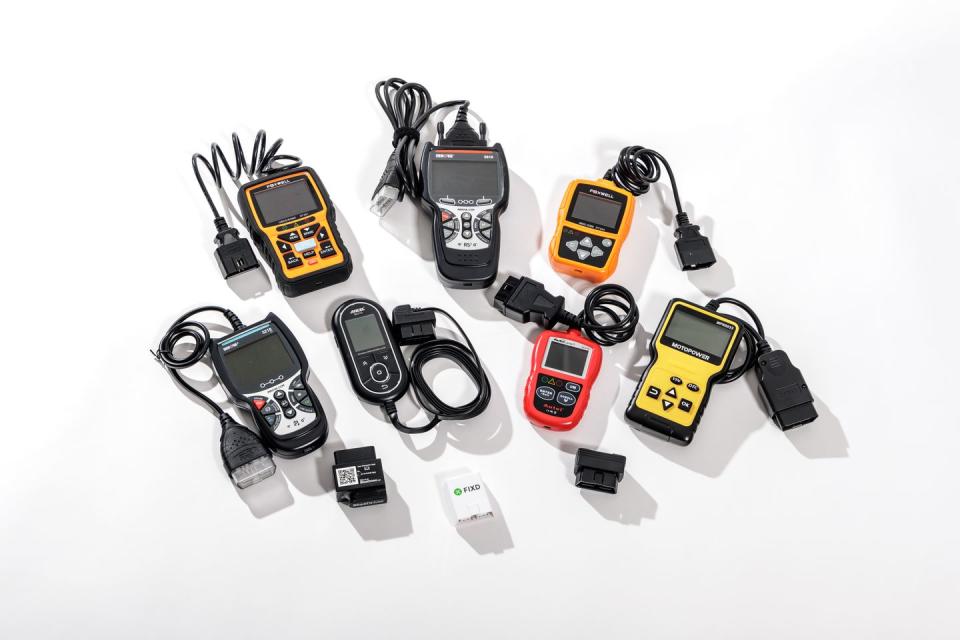
You Might Also Like

 Yahoo Autos
Yahoo Autos 